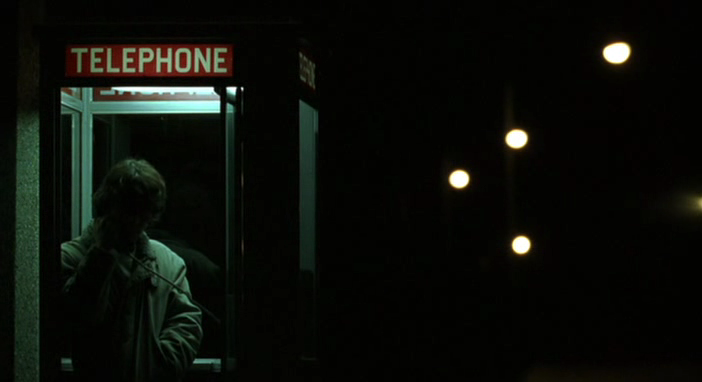To summarize, this report entails that the filming location will be at Grandma's condo, due to the prolific uses of enclosed spaces and diagetic urban sounds. There are 4 windows, 1 door, 2 power sources and no obstructions. There are ambient traffic and street noises which are not problematic. Access to the facility is easy with light traffic and short commute time from home (around 20 minutes). To finalize this decision we will need Grandma's permission for filming with the duration of 2 days.
Tuesday, January 31, 2017
Location Scouting Report
To summarize, this report entails that the filming location will be at Grandma's condo, due to the prolific uses of enclosed spaces and diagetic urban sounds. There are 4 windows, 1 door, 2 power sources and no obstructions. There are ambient traffic and street noises which are not problematic. Access to the facility is easy with light traffic and short commute time from home (around 20 minutes). To finalize this decision we will need Grandma's permission for filming with the duration of 2 days.
Monday, January 16, 2017
Thursday, January 5, 2017
Wednesday, January 4, 2017
Tuesday, January 3, 2017
What is Film Noir?

What Exactly is Noir?
"Noir" is a genre of film characterized by intricate storytelling and crime fiction themes. It is extremely stylized and reliant on stock characters of a certain type. The "Noir" translates to "film black"; when the genre originated in the 40's all films were in black and white, even after movies transitioned to color film noir retained the darkened palette of its early years. The plot of a classic noir usually revolves around a murder mystery of some sort in which a fatally-flawed character is motivated by his desire for answers to resolve the conflict. At some point, the character falls under the influence of a femme fatale who often sets off the motion of the plot by introducing the 'case'. Classic examples of noir include "The Big Sleep" and "The Maltese Falcon" both starring Humphrey Bogart. Although the genre has evolved dramatically over time, its core elements remain intact, as seen in "Sin City" "Dark City" and of course "Brick".
Camera Techniques

Camerawork in film noir is eclectic, often with extreme low or high angled shots. The lighting is often dark or washed out in shades of gray, which contributes to the genre's melancholic tone. The background can be in equal focus, giving a sense of ambiguity. Frame compositions are out-of-balance, with mirrors and reflections in various scenes to convey themes of duality and highlight secrets.
Modernist Noir Elements of "Brick"
In this regard, "Brick" is characteristic of noir; shot mainly in a suburban setting at a highschool, mirroring the typical urban city setting. The color palette is dour, full of gray and other muted tones. Although the characters are high school studies, they speak in rapid-fire, witty and cynical exchanged that associate them with classic noir archetypes. The protagonist, Brendan, fits the mold of the hard-boiled detective on a case, and is surrounded by a cast of equally traditional figures; the femme fatale with a secret (Laura), the unintelligent muscle (Tug), the sinister crime figure (The Pin)... More than any specific quality, the noirishness of "Brick" derived from a deep sense of pessimism about human nature; the characters seem to be resigned to their fates, and even Brendan is attempting to solve a mystery for his personal redemption rather and out of a sense of good.
Modernist Noir Elements of "Brick"
In this regard, "Brick" is characteristic of noir; shot mainly in a suburban setting at a highschool, mirroring the typical urban city setting. The color palette is dour, full of gray and other muted tones. Although the characters are high school studies, they speak in rapid-fire, witty and cynical exchanged that associate them with classic noir archetypes. The protagonist, Brendan, fits the mold of the hard-boiled detective on a case, and is surrounded by a cast of equally traditional figures; the femme fatale with a secret (Laura), the unintelligent muscle (Tug), the sinister crime figure (The Pin)... More than any specific quality, the noirishness of "Brick" derived from a deep sense of pessimism about human nature; the characters seem to be resigned to their fates, and even Brendan is attempting to solve a mystery for his personal redemption rather and out of a sense of good.
Monday, January 2, 2017
Is Ferris Bueller real? - The Fight Club Syndrome
Voices in Your Head:
Imagined Characters in Movies
All of us have subconscious hopes and dreams that we are unable to make real in our everyday lives. Maybe we don't have the money to become the space tourists we always wanted to become, or simply aren't capable of growing Wolverine claws. Anyways, we're all trapped in a way because we cannot extend ourselves as much films portray fantasies as reality. This is a key part of the appeal of movies; they can wish-fulfillment; allowing the audience to live out their dreams through the characters.
Even so, movies are also commentaries on reality, either as we actually experience it, or as we would like it to be. Characters exist in fictional worlds with their own rules that govern their behavior. Sometimes, they too cannot be who they really want to be. Through the power of imagination, they can will another character into life, someone with the power to do what they cannot...

The classic example of this technique of Fight Club where the unnamed protagonist, played by Ed Norton, feels emasculated and worthless in modern society. He makes a friend, Tyler Durden, who liberates him and changes the way he sees the world. However, it turns out that Tyler was a figment of his imagination, a creation of his subconscious specifically designed to help him become someone else.

Ferris Bueller's Day Off is a classic of 1980's teen cinema. Ferris is a good-looking, popular young man who pretends to be sick and takes a day off to party and have fun. He enlists his friend Cameron, who is a bundled wreck of nerves and repression. Together, they have a lot of fun, although they do end up wrecking Cameron's dad's Ferrari... Ferris himself plays a role quite similar to that of Tyler Durden, freeing Cameron from the structures and restrictions of teenage life. Ferris allows Cameron to live out a fantasy that he would probably not have been able to make happen on his own. Now, there is no explicit part of the movie saying that Ferris is imaginary, but his role as a wish-fulfillment device for Cameron, not to mention his sheer extreme cartoonish recklessness, and led to some interesting fan theories online.
The Art of Killing off Characters...
1. Does the character's death advance the plot?
For example: Sonny Corleone's demise in the "Godfather" (1972)-> allows his brother Michael Corleone, to step in and inherit the family's wealth as crime boss and eliminate all his enemies. In this case the death of Sonny is a key part of the rise (and fall) of the Corleone family, which is the main story of the Godfather trilogy.
2. Is the death relevant to any story/side arc?
For example: In Lord of the Rings, Boromir dies, allowing Aragorn to consolidate authority over the Fellowship. Boromir is a relatively minor character, but the audience is still invested in him (perhaps because he's the closest we get to a 'normal' person, serving in a way as an audience stand-in). Still, his death is instrumental in Aragon's rise.
3. How does the situation justify the death?
For example: The execution of Ned Stark in Game of Thrones. Unlike Boromir, who falls victim to greed and lust for power, Ned Stark stays faithful to his principles. Arguably, this sense of honor leads to his downfall. Game of Thrones is a story of flawed people fighting for influence, so in way the death of a truly honorable character set the tone for the rest of the series.
4. How valuable is the character/The weight of their impact on the story - Main Character vs Secondary Character
5. The attachment to this character from both other characters and audience
6. The audiences predicted reception of the death
Subscribe to:
Posts (Atom)








